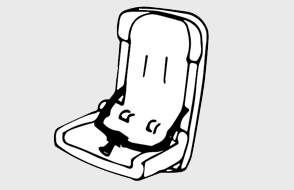Retail centres often require the inclusion of a high volume of toilets. Toilets are typically clustered within blocks of cubicles with shared washing facilities.

Department Store Toilets
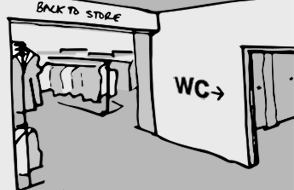
«
»
Contrasting colours

Toilet spaces are easier to use when the colours of the facilities and floor contrast against the colour of wall surfaces. This is particularly helpful for people with visual impairments.
Views and natural light

Toilets can be interesting, creative and pleasant spaces which offer a retreat away from the hustle and bustle of the shopping centre. The view from communal areas in toilet spaces, or skylights bringing in natural light, can have a positive impact on the quality of the space.
Sanitary bins in all toilets

It is often assumed that people using men's toilets won't need access to sanitary bins. This is not the case, so the provision of sanitary bins in all toilets should be considered.
Shelves and hooks

Shelves and hooks are useful in all toilet facilities and prevent users from having to put belongings on the toilet floor. The provision of a shelf is particularly crucial for users with colostomy bags.
Private and communal options for washing
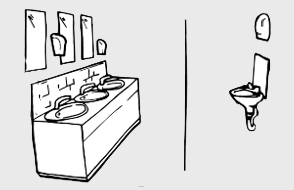
Communal facilities can be fine for some but not for others, such as some trans people or those who use toilets to perform ablutions. Consider including opportunities for people to access private options for all facilities, such as private washing facilities.
Shelves and hooks

Shelves and hooks are useful in all toilet facilities and prevent users from having to put belongings on the toilet floor. The provision of a shelf is particularly crucial for users with colostomy bags.
Toilets for older children
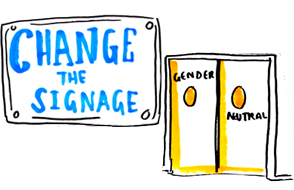
As children get older they can become more aware of gender identity and may start to feel uncomfortable about going into a toilet with a parent/carer of a different gender to themselves. Providing gender neutral toilets allows children to be accompanied by parents without feeling uncomfortable
Making toilet units accessible to everyone

People have many different requirements. Accessible design is about thinking about these diverse requirements. Consider including a range of facilities in each unit: sinks, soap dispensers, hand drying facilities, mirrors, sanitary bins, grab rails, and changing tables.
Toilet and urinal heights
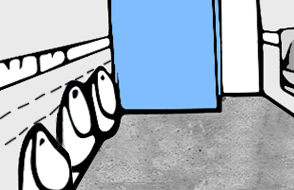
The toilet and urinal are sometimes not at the right height for children and some disabled people. Provide some toilets and urinals positioned at different heights. Also consider installing toilets that are height adjustable to assist use from sitting or standing positions.

